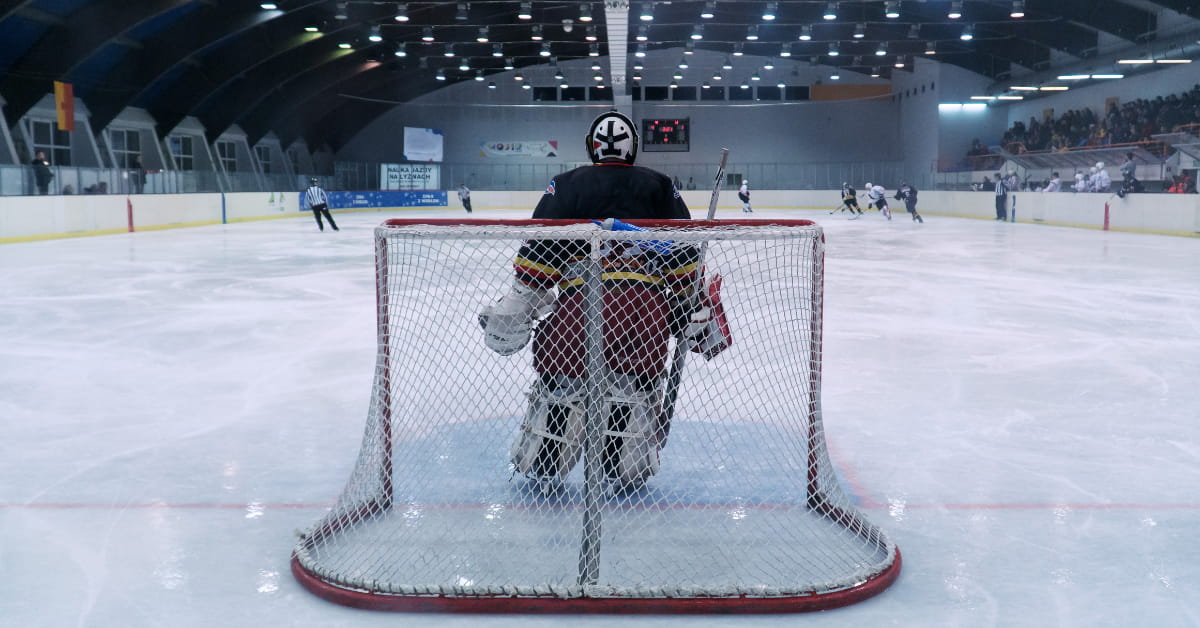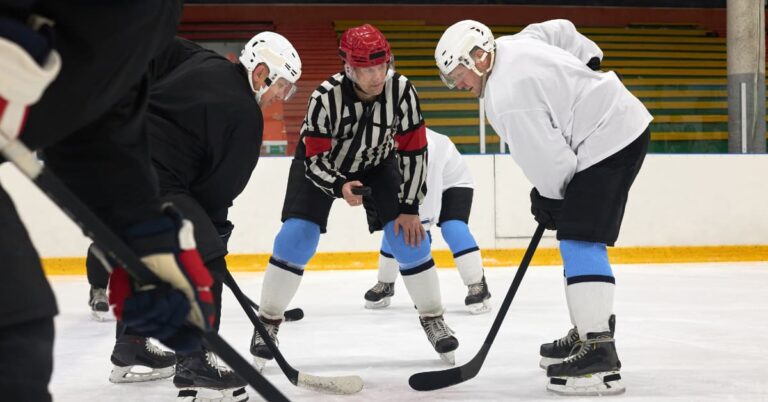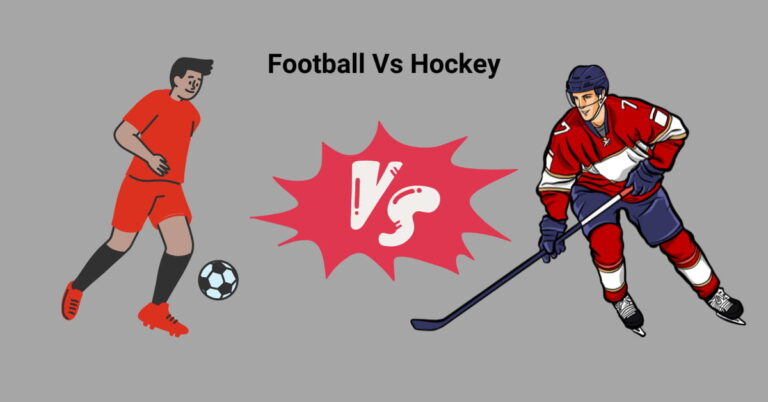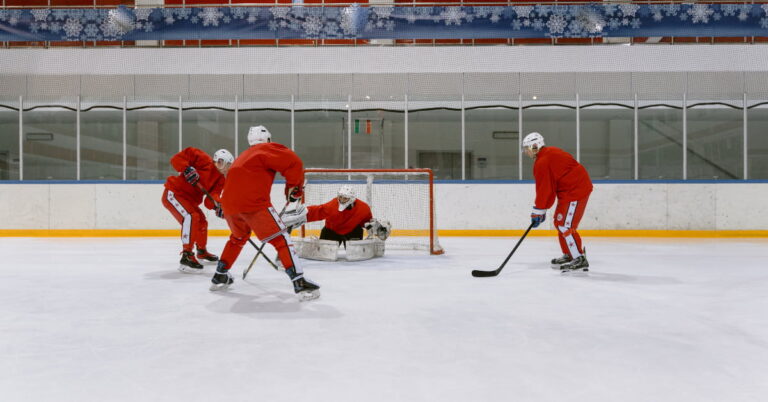What Is The Crease In Hockey?
Hockey is a thrilling game. The crease is a key part of it. It protects the goalie. It plays a role in scoring and strategy. This article covers the crease’s definition, dimensions, and role in scoring. We will also discuss its impact on offensive and defensive strategies. Finally, we will explore the crease’s evolution in hockey history. Understanding the crease helps fans enjoy the game’s strategic and tactical elements.
What Is The Crease In Hockey?
The crease is a semi-circular area. It is in front of each goal on a hockey rink. It has a red line. It is a boundary for the goalie. The crease’s purpose is to give the goalie a safe space. They can move and make saves without interference.
The crease has standard dimensions. It is 6 feet (1.83 meters) wide. It extends 4 feet (1.22 meters) from the goal line. The semi-circular shape gives the goalie space to move. They can react to shots from different angles.
| Feature | Description |
| Shape | Semi-circular |
| Width | 6 feet (1.83 meters) |
| Distance from goal line | 4 feet (1.22 meters) |
| Location | In front of each goal |
Goalie’s Territory
The crease is the goalie’s area. They have special rights and responsibilities. Other players must respect them. The goalie can freeze the puck, cover it, or play it with their hands. They can do this within the crease. These actions are usually not allowed elsewhere.
Opposing players have restrictions. They cannot enter the crease before the puck. They must avoid contact with the goalie. These rules keep the goalie safe. They also maintain the game’s integrity.

Crease Violations and Penalties
Crease violations happen when an opposing player enters the crease without the puck. They also happen when a player contacts the goalie. Referees enforce these rules. They make sure players respect the crease.
Crease violations have consequences. Sometimes, the play stops. A faceoff occurs outside the offensive zone. In severe cases, a player gets a minor penalty. This results in a two-minute power play for the opposing team.
The Role of the Crease in Scoring
The crease is important for scoring. Goals can be disallowed if a crease violation occurs. If a player is in the crease and interferes with the goalie, the goal may not count.
Video review helps decide if a goal should count. Referees can consult with the league’s video review center. They can analyze the play and make a decision. This technology ensures fair and accurate goals.
Players must be aware of the crease when trying to score. A goal can be disallowed if a crease violation occurs. This awareness requires skill and understanding. Players must position themselves well. They must avoid the goalie’s territory while trying to score.
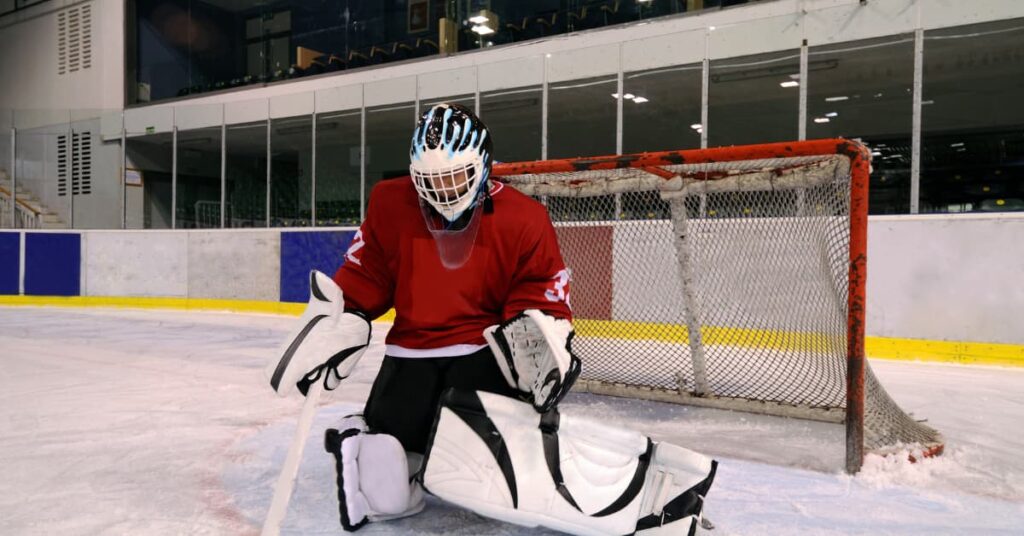
Crease Strategy for Offensive and Defensive Players
The crease is important for offensive and defensive players. Offensive players can position near the crease. This has advantages. First, they can screen the goalie. This makes it harder for the goalie to see and react to shots. Second, they can deflect and tip shots. This changes the puck’s trajectory. It makes it harder for the goalie to save.
Defensive players must protect the crease. They must ensure the goalie can see the puck. This involves clearing out opposing players. They must also block shots before they reach the goalie. Effective crease defense requires physicality, awareness, and communication.
The crease affects gameplay and tactics. Players must be aware of their position. Coaches must create strategies that consider the crease.
Evolution of the Crease in Hockey History
The crease has changed over time. Early creases were smaller and rectangular. As the game evolved, the crease expanded. It became semi-circular. This gave the goalie more space to move.
Rule changes have also affected the crease. The NHL introduced the “crease rule” in the 1990s. This rule disallowed goals if a player was in the crease. This rule was later modified. Goals can now be disallowed if the player interferes with the goalie.
Notable moments in hockey history involve the crease. The 1999 Stanley Cup Final had the “No Goal” incident. A controversial goal was scored while a player was in the crease. This event led to rule changes. Video review now helps decide if goals are legitimate.
Conclusion
The crease is crucial in hockey. It protects the goalie. It plays a role in scoring and strategy. Understanding the crease helps fans enjoy the game’s strategic and tactical elements. Watch closely and appreciate the intricacies of hockey.

